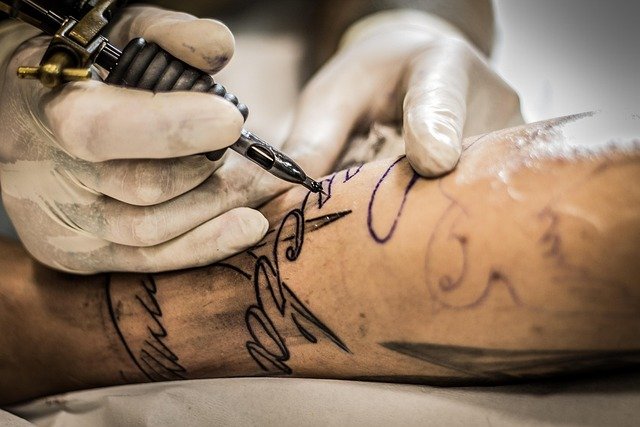Pricing Factors Explained for Custom Body Ink Work
Understanding how studios set fees for custom tattoos helps clients make informed choices. This article outlines common factors that influence costs—from initial consultations and design complexity to sterilization practices and equipment—so you can evaluate local services and plan accordingly.

Custom body ink involves many decisions beyond the visible design, and pricing reflects a mixture of artistic, technical, and regulatory considerations. Before booking a session, it’s helpful to understand how consultation, design complexity, materials, and safety measures translate into time and cost. This article breaks down the main influences on pricing so clients can compare local services, set realistic budgets, and discuss expectations with artists.
This article is for informational purposes only and should not be considered medical advice. Please consult a qualified healthcare professional for personalized guidance and treatment.
How do consultation and design shape pricing?
A consultation is often the first step in a custom tattoo project. During this meeting the artist assesses size, placement, reference material, and any necessary design work. More detailed custom designs require longer concept stages and more hours in the chair, which raises the final fee. Portfolio review during consultation lets clients see an artist’s style and past work, which helps determine fit and influences perceived value. Revisions, bespoke lettering, or multiple sittings for staged work will typically be reflected in pricing discussions.
How do ink type and tattoo styles change costs?
Different styles—fine line, realistic portraiture, watercolor, traditional, or complex color blends—demand varying levels of time, skill, and ink. High-pigment color work or layered shading uses more ink and longer sessions. Specialty inks (for example, pigment blends or certain colorfast formulations) can be more expensive to source and may lead to higher session costs. Artists set rates in part to account for the time-intensive techniques required by some styles and the materials necessary to achieve consistent results.
How do sterilization and sanitation affect rates?
Sanitation and sterilization are non-negotiable elements of professional practice. Single-use needles, autoclave-sterilized reusable tools, disposable barriers, and rigorous workspace cleaning all carry ongoing costs. Studios that adhere to higher regulatory standards or maintain certifications may charge more to cover these expenses. Local health regulations also impose equipment and record-keeping requirements that can influence overhead and client rates.
How does equipment impact pricing and quality?
Professional tattoo machines, power supplies, disposable cartridges, and quality inks represent upfront and recurring investments for an artist. Higher-end rotary or coil machines, precision needles, and ergonomic setups can improve speed and finish, but they increase operating costs that are recovered through pricing. Properly maintained, well-calibrated equipment can reduce session time and improve outcomes, which some artists factor into their hourly or per-piece rates.
How do aftercare and healing influence overall cost?
Aftercare instructions, recommended products, and expected healing timelines are part of the service experience. Complicated pieces that require touch-ups after healing—or those placed in areas with challenging healing profiles—can result in additional sessions. Some artists include a single short touch-up in the original fee, while others charge separately. Budgeting for recommended aftercare products and potential follow-up work is part of planning for a custom piece.
Pricing insights and provider comparison
Real-world pricing varies by location, artist experience, and project scope. Below is a general comparison of common service categories across typical provider types to illustrate benchmarks and how costs can differ.
| Product/Service | Provider | Cost Estimation |
|---|---|---|
| Small custom piece (1–2 hrs) | Independent artist (local) | $80–$300 |
| Medium custom piece (3–6 hrs) | Boutique studio/established artist | $300–$900 |
| Large piece or full sleeve (multiple sessions) | Experienced specialist | $900–$4000+ |
| Touch-up (single short session) | Any professional studio | $50–$200 |
| Aftercare product (ointment/cream) | Retail brands / shop-sold | $8–$30 |
Prices, rates, or cost estimates mentioned in this article are based on the latest available information but may change over time. Independent research is advised before making financial decisions.
These ranges are illustrative benchmarks rather than firm quotes. Independent artists often have lower hourly rates but may vary widely based on skill and demand. Boutique studios and highly experienced specialists charge more to reflect reputation, portfolio depth, and overhead costs. Always request a written estimate, clarify what the price covers (design time, session time, touch-ups), and confirm refund or rescheduling policies.
Regulations and local rules can also affect pricing: some jurisdictions require additional licensing, waste-disposal procedures, or business insurance, which contribute to studio overhead. Clients consulting an artist should ask about the studio’s sanitation practices, equipment maintenance, and how the artist documents consent and aftercare instructions.
Conclusion Understanding the elements that drive custom tattoo pricing—design complexity, chosen style and ink, sanitation and equipment costs, and local regulations—helps clients set expectations and find a match with artists and studios in their area. Clear consultation, portfolio review, and a transparent estimate are the best ways to align artistic goals with budgets and to ensure a safe, lasting result.






